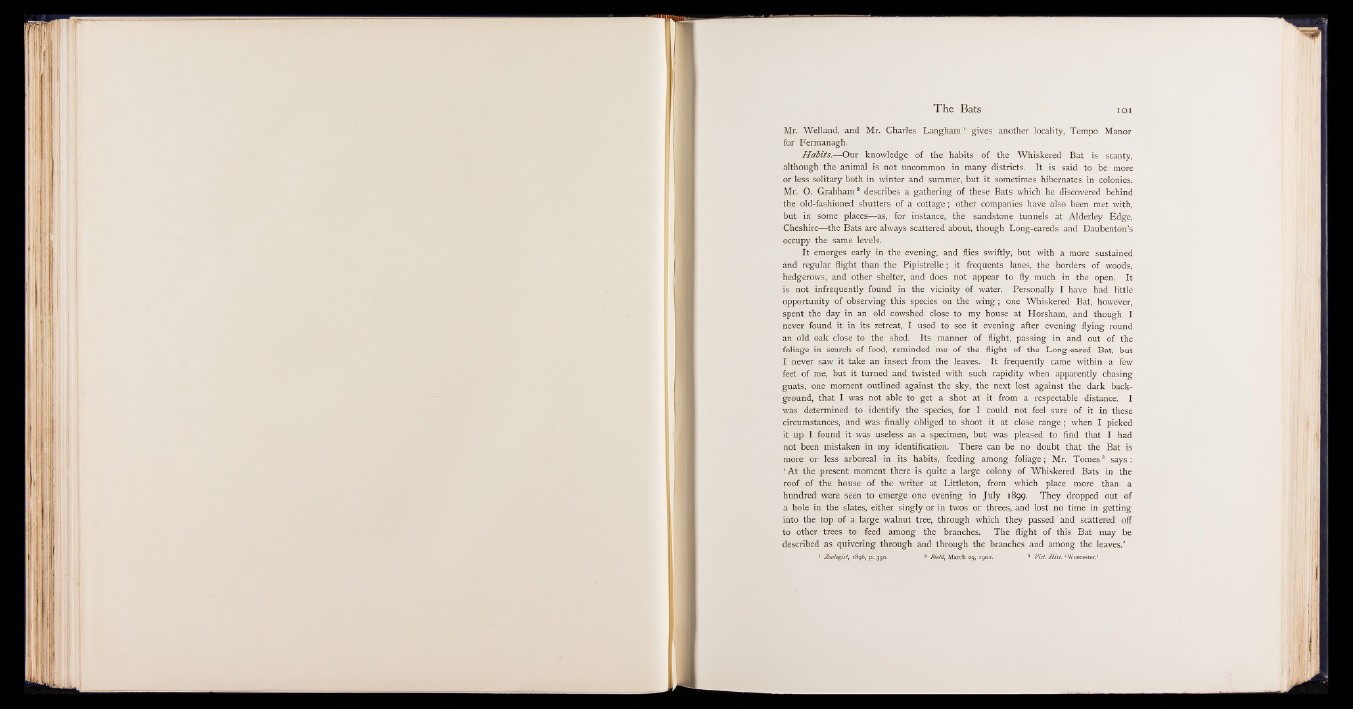
The Bats IO I
Mr. Welland, and Mr. Charles Langham1 gives another locality, Tempo Manor
for Fermanagh.
Habits.— Our knowledge of the habits of the Whiskered Bat is scanty,
although the animal is not uncommon in many districts. It is said to be more
or less solitary both in winter and summer, but it sometimes hibernates in colonies.
Mr. O. Grabham9 describes a gathering of these Bats which he discovered behind
the old-fashioned shutters of a cottage; other companies have also been met with,
but in some places— as, for instance, the sandstone tunnels at Alderley Edge,
Cheshire— the Bats are always scattered about, though Long-eareds and Daubenton’s
occupy the same levels.
It emerges early in the evening, and flies swiftly, but with a more sustained
and regular flight than the Pipistrelle; it frequents lanes, the borders of woods,
hedgerows, and other shelter, and does not appear to fly much in the open. It
is not infrequently found in the vicinity of water. Personally I have had little
opportunity of observing this species on the wing; one Whiskered Bat, however,
spent the day in an old cowshed close to my house at Horsham, and though I
never found it in its retreat, I used to see it evening after evening flying round
an old oak close to the shed. Its manner of flight, passing in and out of the
foliage in search of food, reminded me of the flight of the Long-eared Bat, but
I never saw it take an insect from the leaves. It frequently came within a few
feet of me, but it turned and twisted with such rapidity when apparently chasing
gnats, one moment outlined against the sky, the next lost against the dark background,
that I was not able to get a shot at it from a respectable distance. I
was determined to identify the species, for I could not feel sure of it in these
circumstances, and was finally obliged to shoot it at close range; when I picked
it up I found it was useless as a specimen, but was pleased to find that I had
not been mistaken in my identification. There can be no doubt that the Bat is
more or less arboreal in its habits, feeding among foliage; Mr. Tomes8 says:
‘ A t the present moment there is quite a large colony of Whiskered Bats in the
roof of the house of the writer at Littleton, from which place more than a
hundred were seen to emerge one evening in July 1899. They dropped out of
a hole in the slates, either singly or in twos or threes, and lost no time in getting
into the top of a large walnut tree, through which they passed and scattered off
to other trees to feed among the branches. The flight of this Bat may be
described as quivering through and through the branches and among the leaves.’
1 Zoologist, 1896, p. 350. * Field, March 29, 1902. 3 Viet. H ist. ‘ Worcester.’